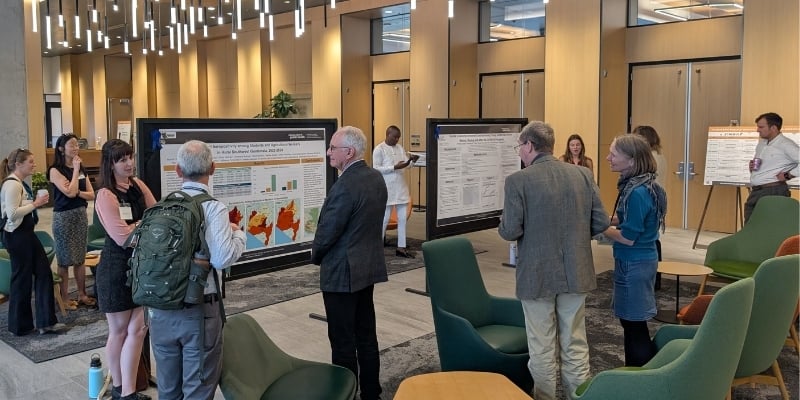Emergencies happen. Teachers are among many groups that may be anxious about staying safe on the job coupled with concerns about how to prepare for and respond to school-based emergencies. Additionally, many teachers have strong emotional reactions to emergency preparedness activities (such as active harmer drills). While the existing infrastructure emphasizes material preparedness, staff psychological preparedness is not typically acknowledged or supported.
Courtney Welton-Mitchell, PhD, and Natalie Schwatka, PhD, MS, from the Center for Health, Work & Environment, recently completed a two-year research project of psychological preparedness training for the public-school workforce, complimenting current emergency preparedness plans and drills. The project includes shared leadership and peer support components, encouraging teachers to support one another and engage with emergency preparedness planning efforts. The team worked with six schools (elementary, middle and high school) from one district, training nearly 500 school-based personnel, working in collaboration with district safety and security team members and mental health staff.
Researchers hosted three-hour interactive trainings during professional development days with teachers and staff. The team developed a specific training curriculum using a participatory approach, based on consultations with over 60 Colorado teachers and staff in six districts.
“Based on teacher feedback, we prioritized psychological preparedness, including an emphasis on coping skills that can be used in emergencies, teaching staff how to regain control of physiological responses that may get in the way of optimal decision making in a crisis,” said Welton-Mitchell. “However, in a Total Worker Health® model, it’s not just about what the individual does. We’re talking with these educators and staff about what the district and their peers can do to support them as well.”
Shared leadership among staff
The training included a shared leadership approach—focusing on building individual coping skills as well as a staff member’ collective capacity to influence change in how the district plans for emergencies. Each parts of the training tapped into key leadership skills teachers and staff can use to influence emergency preparedness. For example, when teachers practice coping skills, they lead by example. When they suggest new ways of preparing for emergencies, they are taking risks and challenging the status quo. By encouraging these behaviors, districts can encourage a shared leadership approach to emergency preparedness.
“The goal of this project was to elevate the voices of teachers and staff, empowering them to become leaders in emergency preparedness,” said Welton-Mitchell. “We trained the public school workforce in psychological preparedness and peer support, ensuring that teachers and staff had access to district safety and security personnel to share their needs, ask questions and provide suggestions. This is truly a mental health integrated emergency preparedness model that aims to forge connections.”
Total Worker Health meets emergency preparedness
The training was a marriage between Welton-Mitchell and Schwatka’s backgrounds. Welton-Mitchell has worked as a mental health clinician specializing in traumatic stress, humanitarian aid worker, and researcher working with communities impacted by events such as earthquakes, floods and violence. Schwatka has deep expertise in the Total Worker Health approach to workforce health and safety and leveraging organizational leadership to enhance the approach.
“The field of Total Worker Health needs transdisciplinary approaches to solve complex workforce health challenges,” said Schwatka. “It was exciting for us to work together to create something truly unique and impactful for public schools.”
The team used a matched cluster comparison research design, in which three schools received the training initially and another three were ‘waitlisted’ to receive the training after the final online survey was administered. Results indicate that the intervention was successful on outcomes of interest. The teachers and staff who participated in the training reported more psychological preparedness and peer support for emergencies, an increased sense that they collectively shared leadership responsibilities for emergency preparedness, and a belief that their school was more committed to emergency preparedness.
Those who did not participate in the training reported no changes in these outcomes. The team gathered a significant amount of feedback from participants on how the district could best prepare for emergencies and shared a summary of those findings with the district. The district has already made changes to their processes because of the study.
“You can’t be a good leader if you aren’t taking care of yourself. We hope that these trainings helped teachers learn how to care for themselves, gain confidence in emergency preparedness planning, and become more psychologically prepared for emergencies,” said Schwatka.






